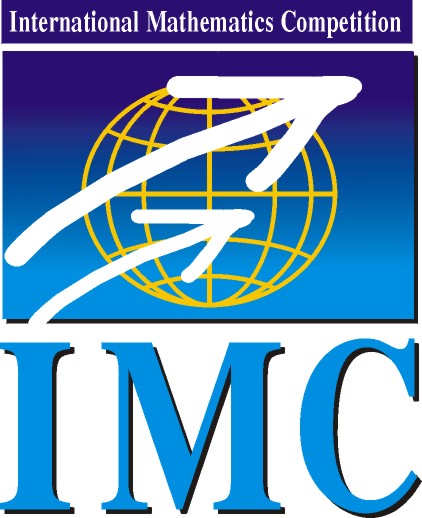
|
International Mathematics Competition
|
IMC 2026 |
| Information | Schedule | Problems & Solutions | Results | Contact |
IMC2021: Day 1, Problem 4
Problem 4. Let \(\displaystyle f:\RR\to\RR\) be a function. Suppose that for every \(\displaystyle \varepsilon > 0\), there exists a function \(\displaystyle g:\RR\to(0,\infty)\)such that for every pair \(\displaystyle (x,y)\) of real numbers,
\(\displaystyle \text{if} \quad |x-y| < \min\big\{g(x),g(y)\big\}, \quad\text{then}\quad \big|f(x) - f(y)\big| < \varepsilon. \)
Prove that \(\displaystyle f\) is the pointwise limit of a sequence of continuous \(\displaystyle \RR\to\RR\) functions, i.e., there is a sequence \(\displaystyle h_1,h_2,\ldots\) of continuous \(\displaystyle \RR\to\RR\) functions such that \(\displaystyle \lim\limits_{n\to\infty}h_n(x)=f(x)\) for every \(\displaystyle x\in\RR\).
Camille Mau, Nanyang Technological University, Singapore
Solution 1. Since \(\displaystyle g\) depends also on \(\displaystyle \varepsilon\), let us use the notation \(\displaystyle g(x, \varepsilon)\). Considering only \(\displaystyle \varepsilon = 1/n\) for positive integer \(\displaystyle n\) will suffice to reach our conclusions, hence we may use \(\displaystyle \min\{ g(x, 1/m)\ |\ m\le n\}\) in place of \(\displaystyle g(x, 1/n)\) and thus assume \(\displaystyle g(x,\varepsilon)\) decreasing in \(\displaystyle \varepsilon\).
For any \(\displaystyle x\in\mathbb R\), choose \(\displaystyle \delta_n(x) = \min\{ 1/n, g(x, 1/n)\}.\) Of the \(\displaystyle \delta_n(x)\)-neighborhoods of all \(\displaystyle x\) select (using local compactness of the reals) an inclusion-minimal locally finite covering \(\displaystyle \{U_i\}\). From its inclusion-minimality it follows that we may enumerate \(\displaystyle U_i\) with \(\displaystyle i\in\mathbb Z\) so that \(\displaystyle U_i\cap U_j\neq\emptyset\) only when \(\displaystyle |i-j|\le 1\) and the enumeration goes from left to right on the real line. For an assumed \(\displaystyle n\), let \(\displaystyle x_i\) be the center of \(\displaystyle U_i\) and \(\displaystyle \delta_i = \delta_n(x_i)\), so that \(\displaystyle U_i=(x_i-\delta_i, x_i+\delta_i)\) and \(\displaystyle \delta_i<1/n\) for all \(\displaystyle i\).
Now define a continuous \(\displaystyle f_n:\mathbb R\to \mathbb R\) so that it equals \(\displaystyle f(x_i)\) in \(\displaystyle U_i\setminus (U_{i-1}\cup U_{i+1})\), and so that \(\displaystyle f_n\) changes continuously between \(\displaystyle f(x_{i-1})\) and \(\displaystyle f(x_i)\) in the intersection \(\displaystyle U_{i-1}\cap U_i\).
Now we show that \(\displaystyle f_n\to f\) pointwise. Fix a point \(\displaystyle x\) and \(\displaystyle \varepsilon = 1/m > 0\), and choose
\(\displaystyle n > \max\left\{1/g(x,\varepsilon), m\right\}. \)
Examine the construction of \(\displaystyle f_n\) for any such \(\displaystyle n\). Observe that \(\displaystyle g(x,\varepsilon) > 1/n > \delta_i\) and \(\displaystyle 1/n < 1/m\). There are two cases:
- \(\displaystyle x\) belongs to the unique \(\displaystyle U_i\). Then using the monotonicity of \(\displaystyle g(x,\varepsilon)\) in \(\displaystyle \varepsilon\) we have
- \(\displaystyle x\) belongs to \(\displaystyle U_{i-1}\cap U_i\). Similar to the previous case,
\(\displaystyle |x_i-x| < \delta_i \le \min\left\{g\left(x_i, \frac1n\right), g\left(x, \varepsilon\right)\right\} \le \min\left\{g(x_i, \varepsilon), g(x, \varepsilon)\right\}. \)
Hence
\(\displaystyle |f(x) - f_n(x)| = |f(x) - f(x_i)| < \varepsilon. \)
\(\displaystyle |f(x) - f(x_{i-1})|, |f(x) - f(x_i)| < \varepsilon. \)
Since \(\displaystyle f_n(x)\) is between \(\displaystyle f_n(x_{i-1}) = f(x_{i-1})\) and \(\displaystyle f_n(x_i) = f(x_i)\) by construction, we have
\(\displaystyle |f(x) - f_n(x)| < \varepsilon. \)
We have that \(\displaystyle |f(x)-f_n(x)| < \varepsilon\) holds for sufficiently large \(\displaystyle n\), which proves the pointwise convergence.
Solution 2. This solution uses the Baire characterization theorem: A function \(\displaystyle f: \mathbb R\to\mathbb R\) is a pointwise limit of continuous functions if and only if its restriction to every non-empty closed subset of \(\displaystyle \mathbb R\) has a point of continuity.
Assume the contrary in view of the above theorem: \(\displaystyle A\subseteq \mathbb R\) is a non-empty closed set and \(\displaystyle f\) has no point of continuity in \(\displaystyle A\). Let's think that \(\displaystyle f\) is defined only on \(\displaystyle A\).
Then for all \(\displaystyle x\in A\) there exist rationals \(\displaystyle p<q\) for which \(\displaystyle \limsup_x f> q\), \(\displaystyle \liminf_x f< p\). Apply the Baire category theorem: If a complete metric space \(\displaystyle A\) is a countable union of sets then some of the sets is dense in a positive radius metric ball of \(\displaystyle A\). It follows that there exist \(\displaystyle p\) and \(\displaystyle q\), which serve for a subset \(\displaystyle B\subset A\) which is dense on a certain ball (in the induced metric of the real line) \(\displaystyle A_1\subset A\). It yields that both sets \(\displaystyle Q=f^{-1}(q,\infty)\) and \(\displaystyle P=f^{-1}(-\infty,p)\) are dense in \(\displaystyle A_1\).
Choose \(\displaystyle \varepsilon=(q-p)/10\) and find \(\displaystyle k\) for which the set \(\displaystyle S=\{x:g(x)>1/k\}\) is also dense on a certain ball \(\displaystyle A_2\subset A_1\). Partition \(\displaystyle S\) into subsets where \(\displaystyle f(x)> (p+q)/2\) and \(\displaystyle f(x)\leqslant (p+q)/2\), one of them is again dense somewhere in \(\displaystyle A_3\), say the latter.
Now take any point \(\displaystyle y\in A_3\cap Q\) and a very close (within distance \(\displaystyle \min(1/k,g(y))\)) to \(\displaystyle y\) point \(\displaystyle x\) with \(\displaystyle g(x)>1/k\) but \(\displaystyle f(x)\leqslant (p+q)/2\). This pair \(\displaystyle x,y\) contradicts the property of \(\displaystyle f\) from the problem statement.
Solution 3. This solution uses the Lebesgue characterization theorem: If \(\displaystyle f:\mathbb R\to\mathbb R\) is a function and, for all real \(\displaystyle c\), the sublevel and superlevel sets \(\displaystyle \{x\ |\ f(x)\geqslant c\}\), \(\displaystyle \{x\ |\ f(x)\leqslant c\}\) are countable intersections of open sets then \(\displaystyle f\) is a pointwise limit of continuous functions.
Now the solution follows from the formula with a countable intersection of the unions of intervals:
| \(\displaystyle \{x\ |\ f(x)\geqslant c\}=\bigcap_{n,k=1}^\infty \bigcup_{\substack{y\in\mathbb R \\ f(y)\geqslant c}} \left( y - \min\left\{\frac1k,g\left(y,\frac1n\right)\right\}, y + \min\left\{\frac 1k,g\left(y,\frac1n\right)\right\}\right) \) | \(\displaystyle {(*)} \) |
and the similar formula for \(\displaystyle \{x\colon f(x)\leqslant c\}\). It remains to prove \(\displaystyle (*)\).
The left hand side is obviously contained in the right hand side, just put \(\displaystyle y=x\).
To prove the opposite inclusion assume the contrary, that \(\displaystyle f(x)<c\), but \(\displaystyle x\) is contained in the right hand side. Choose a positive integer \(\displaystyle n\) such that \(\displaystyle f(x)<c-1/n\) and \(\displaystyle k\) such that \(\displaystyle g(x,1/n)>1/k\). Then, since \(\displaystyle x\) belongs to the right hand side, we see that there exists \(\displaystyle y\) such that \(\displaystyle f(y)\geqslant c\) and
\(\displaystyle |x-y|<\min\left\{g\left(y,\frac1n\right),\frac1k\right\}\leqslant \min\left\{g\left(y,\frac1n\right),g\left(x,\frac1n\right)\right\}, \)
which yields \(\displaystyle f(x)\geqslant f(y)-1/n\geqslant c-1/n\), a contradiction.
© IMC